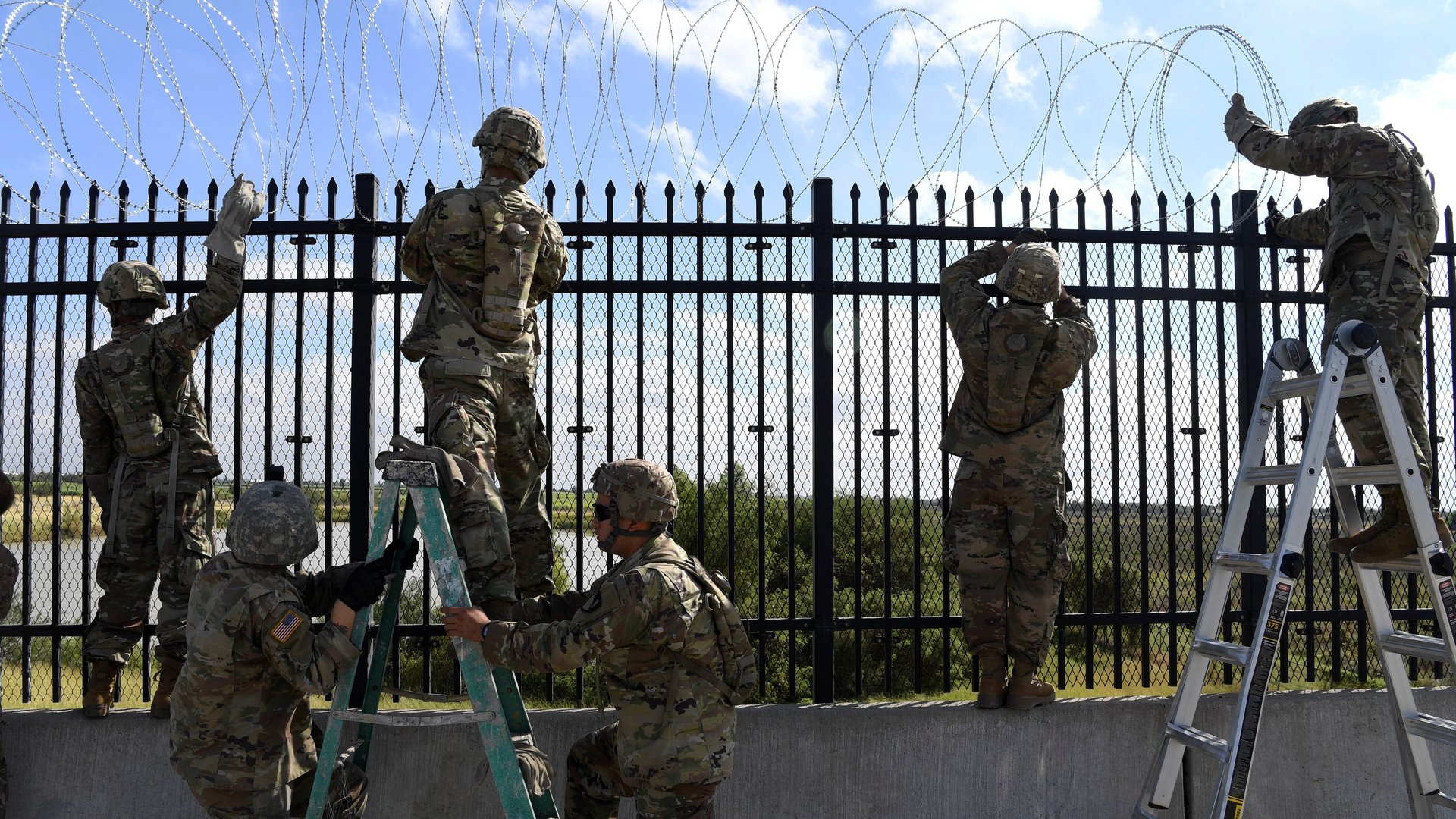Court document shows US troops surveilling migrants at the Mexico border
A criminal complaint filed in New Mexico federal court contains new details about the unprecedented ways in which the US government is using its military to further president Donald Trump’s domestic immigration policy.


A criminal complaint filed in New Mexico federal court contains new details about the unprecedented ways in which the US government is using its military to further president Donald Trump’s domestic immigration policy.
The document describes US Army troops spotting a group of people they believed were undocumented and surveilling them for at least four miles before losing sight of their truck. After turning over location data to the US Border Patrol, agents apprehended the suspects in an operation that included a high-speed car chase.
Normally, Department of Defense policy specifically prohibits “direct civilian law enforcement assistance,” including surveillance and pursuit. The Posse Comitatus Act was passed after the US Civil War and makes it illegal for the military to act as police. The president (or Congress), however, can override this proscription under certain circumstances, like a national emergency.
Trump declared that emergency in a tweet in October 2018, and then ordered the US military to deploy more than 5,000 troops to the southern border. He claimed at the time—without proof—that a caravan of asylum-seekers headed to the US posed a threat because they included “stone cold criminals” and “unknown Middle Easterners.” The Pentagon announced last week that it would send an additional 160 troops.
In general, the government limits the US military to support functions in a domestic setting, like search-and-rescue or supplying food and water to civilians after a disaster. Some have been doing just that. Others have been painting fences, or distributing juice and cookies to detained migrants.
But Trump’s emergency declaration has allowed for an expansion of the kinds of duties US troops perform at the border, including the deployment of military police and helicopters with night vision technology meant to spot people crossing the border in the dark. US soldiers and Marines have operated roughly 150 truck-mounted surveillance cameras for the Border Patrol in California, Arizona, New Mexico, and Texas, assisting in more than 13,000 apprehensions during the first six months of 2019. The short-staffed Border Patrol says its agents would otherwise operate the surveillance trucks if they weren’t so busy with migrant-processing tasks.
Republican legislators have argued that Trump isn’t the first president to send troops to assist at the southern border. However, Democrats on the House Armed Services Committee say that National Guard and reserve units have been used effectively in the past and that deploying active duty troops increases the risk of future readiness problems. Pentagon officials have said the southern border is “not a war zone,” and former military commanders insist troops at the border are not a viable solution to the ongoing border crisis.
In the criminal complaint reviewed by Quartz, which was filed in December, a team of “US Army personnel who were assigned to surveillance duties” spotted six people near the border. “The soldiers were equipped with a thermal imaging scope,” the document says. The Army unit watched as the group piled into a pickup truck, notified Border Patrol, and then continued watching the truck.

Border Patrol officers eventually caught up attempted to pull it over. When the driver kept going, agents at a Border Patrol checkpoint laid out spike strips to deflate the pickup’s tires. It took a couple of tries but eventually the truck veered off the road and everyone in the car bailed out and ran. After a short search, agents arrested six people: four Ecuadorians and two Americans. The driver, Eric Andrew Brooks, pleaded guilty late last month to immigration-related conspiracy charges, and is in custody awaiting sentencing. His passenger, Maria Lucero—who owned the pickup—was apprehended but no charges against her are listed on the federal docket.
While the military’s involvement in this case might seem small, it shines a light on the ongoing militarization of the southern border, something many call a political stunt that does more harm than good.
“The surveillance, tracking, or chasing and arrest of migrants crosses the line in my book,” Jenn Budd, a former Border Patrol agent who now works as an immigration advocate, told Quartz. “It is an every day, every hour occurrence on our borders and does not rise to the level of endangerment required to justify their involvement.”
Jacinta Ma, an attorney at the nonprofit National Immigration Forum, agreed. In an email, Ma said the use of troops in the Brooks case sounded improper, especially “compared to how their duties were described by former [Defense] Secretary [James] Mattis—no civilian law enforcement duties.”
In December, the Defense Department’s inspector general said he would be reviewing the Trump administration’s deployment of the military to the southern border.
“In this evaluation, we will examine, among other issues, what they are doing at the border, what training they received, and whether their use complied with applicable law, DoD policy, and operating guidance,” acting inspector general Glenn Fine said at the time.
US Customs and Border Protection, the Border Patrol’s parent agency, did not respond to Quartz’s request for further details about how its personnel interact with troops at the border.